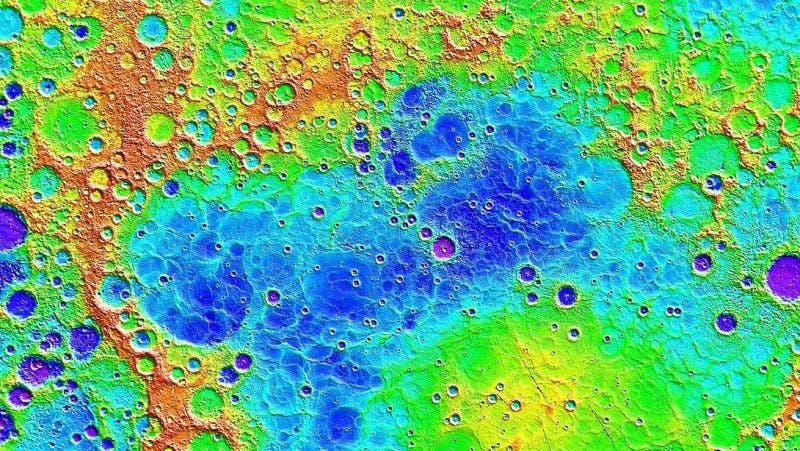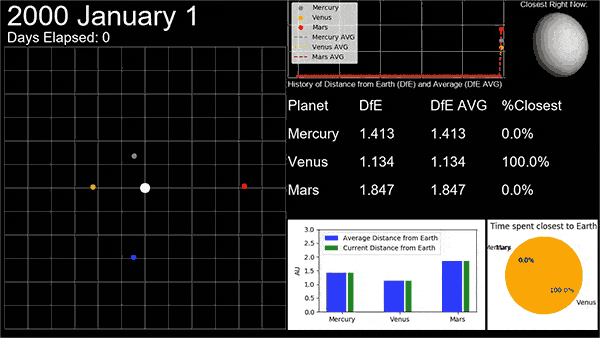If you’d ask most people what; the closest planet to Earth, you’d probably come across one answer: Venus. That answer, while apparently logical, is not really true. Mercury is the planet closest to us.
Even more surprising is the fact that Mercury is the closest neighbor, on average, to each of the other seven planets in the solar system. How can this be?

Image credits: Image: NASA/Johns Hopkins University Applied Physics Laboratory/Carnegie Institution of Washington (Wikimedia Commons).
Mercury’s in retrograde
What’s the planet closest to the Earth? Even without any prior knowledge, a decent guess would be Venus or Mars — these are our planetary neighbors, after all. A simple Google search reveals that Venus’ orbit is closer to that of Earth’s so, naturally, Venus must be the answer, right?
Wrong. Mercury is the planet closest to Earth — at least on average.
As it turns out, Venus being the closest planet to Earth is simply a misconception — one that has propagated greatly through the years.
“By some phenomenon of carelessness, ambiguity, or groupthink, science popularisers have disseminated information based on a flawed assumption about the average distance between planets,” write engineers Tom Stockman, Gabriel Monroe, and Samuel Cordner in a commentary published in Physics Today.
Instead, they recommend a different method of measuring which planet is closest, which they demonstrated using the motions of the planets within the last 10,000 years.
“By using a more accurate method for estimating the average distance between two orbiting bodies, we find that this distance is proportional to the relative radius of the inner orbit.”
Using this method, Mercury is closer to Earth on average. A GIF created by Reddit user u/CharcoalCharts does a great job at depicting this (the Earth is in Blue). The Earth is usually closest to Mercury, although, at some points of the year, it’s closest to Venus or Mars.
Non-intuitive
It feels intuitive that the average distance between every point on two concentric ellipses is closer than ellipses which are farther apart, but this is not necessarily the case. While Venus can get very close to the Earth (at only 0.28 Astronomical Units, with 1 AU being the distance from the Earth to the Sun), the two planets can also be quite far apart, at 1.72 AU. In total, Venus is 1.14 AU from Earth, but Mercury is a much closer 1.04 AU.
There are also two other shocking conclusions from this: first of all, on average, the Sun is closest to the Earth than any other planet (because it’s at 1 AU by definition). Secondly, it’s not just the Earth — Mercury is the closest neighbor of all planets in the solar system. In other words, Uranus is, on average, closer to Mercury than its presumed neighbor, Neptune. The same stands for even the dwarf planet Pluto (we still love you, Pluto!).

A simulation of an Earth year’s worth of orbits by the terrestrial planets begins to reveal that Mercury (gray in orbital animation) has the smallest average distance from Earth (blue) and is most frequently Earth’s nearest neighbor. Image credits: Tom Stockman/Gabriel Monroe/Samuel Cordner.
The whirly-dirly corollary
Researchers also found that the distance between two orbiting bodies is at a minimum when the inner orbit is at a minimum — something which they call the “whirly-dirly corollary” — after an episode of the cartoon Rick and Morty.
The method might also be useful in estimating distances between other orbiting bodies such as satellites or extrasolar planets or stars. In the Physics Today commentary, the researchers explain:
“As best we can tell, no one has come up with a concept like PCM to compare orbits. With the right assumptions, PCM could possibly be used to get a quick estimate of the average distance between any set of orbiting bodies. Perhaps it can be useful for quickly estimating satellite communication relays, for which signal strength falls off with the square of distance. In any case, at least we know now that Venus is not our closest neighbor—and that Mercury is everybody’s.”
 Read Again https://www.zmescience.com/science/news-science/mercury-earth-closest-21032019/
Read Again https://www.zmescience.com/science/news-science/mercury-earth-closest-21032019/
Bagikan Berita Ini














0 Response to "Mercury is the planet closest to Earth — contrary to popular belief - ZME Science"
Post a Comment